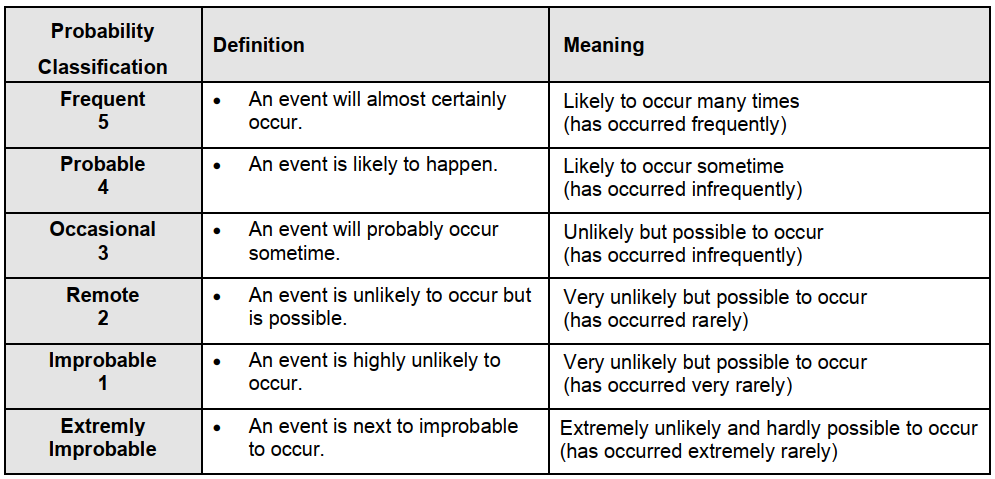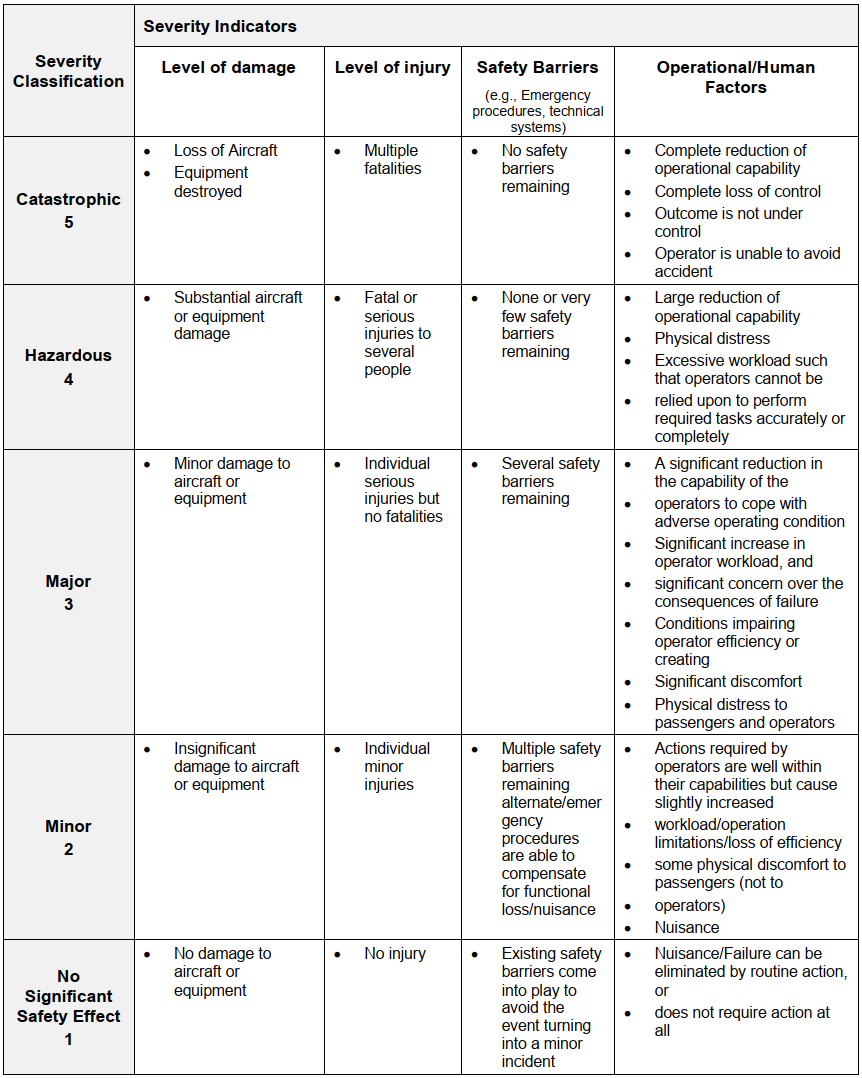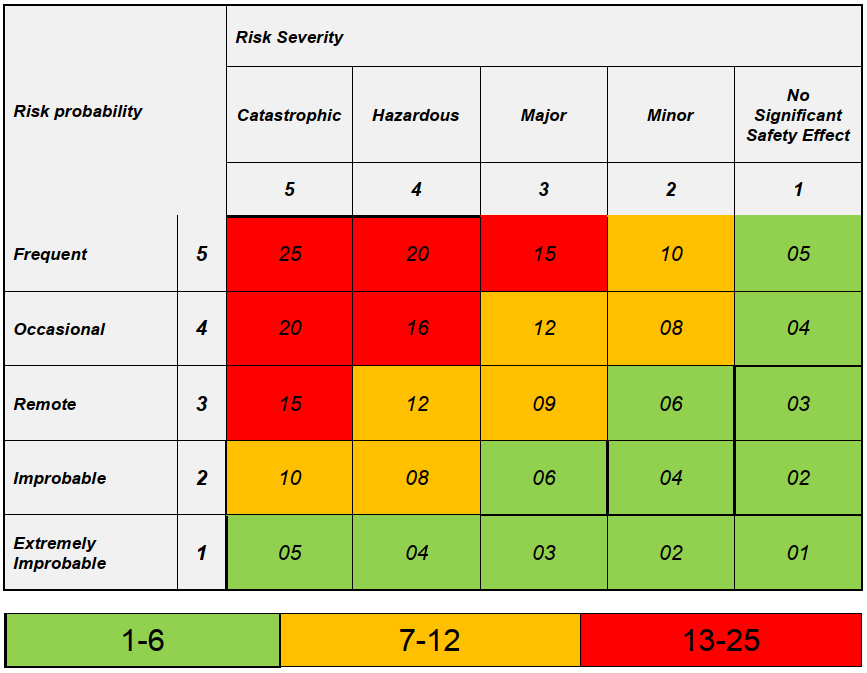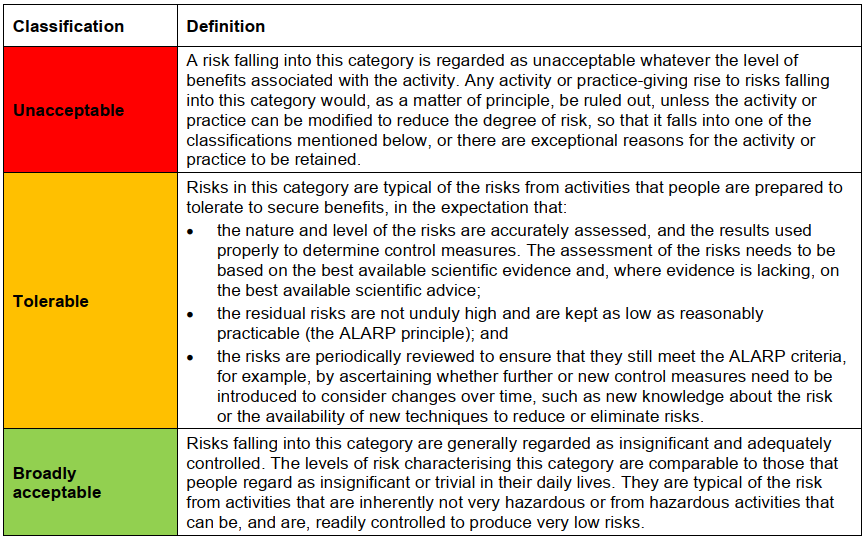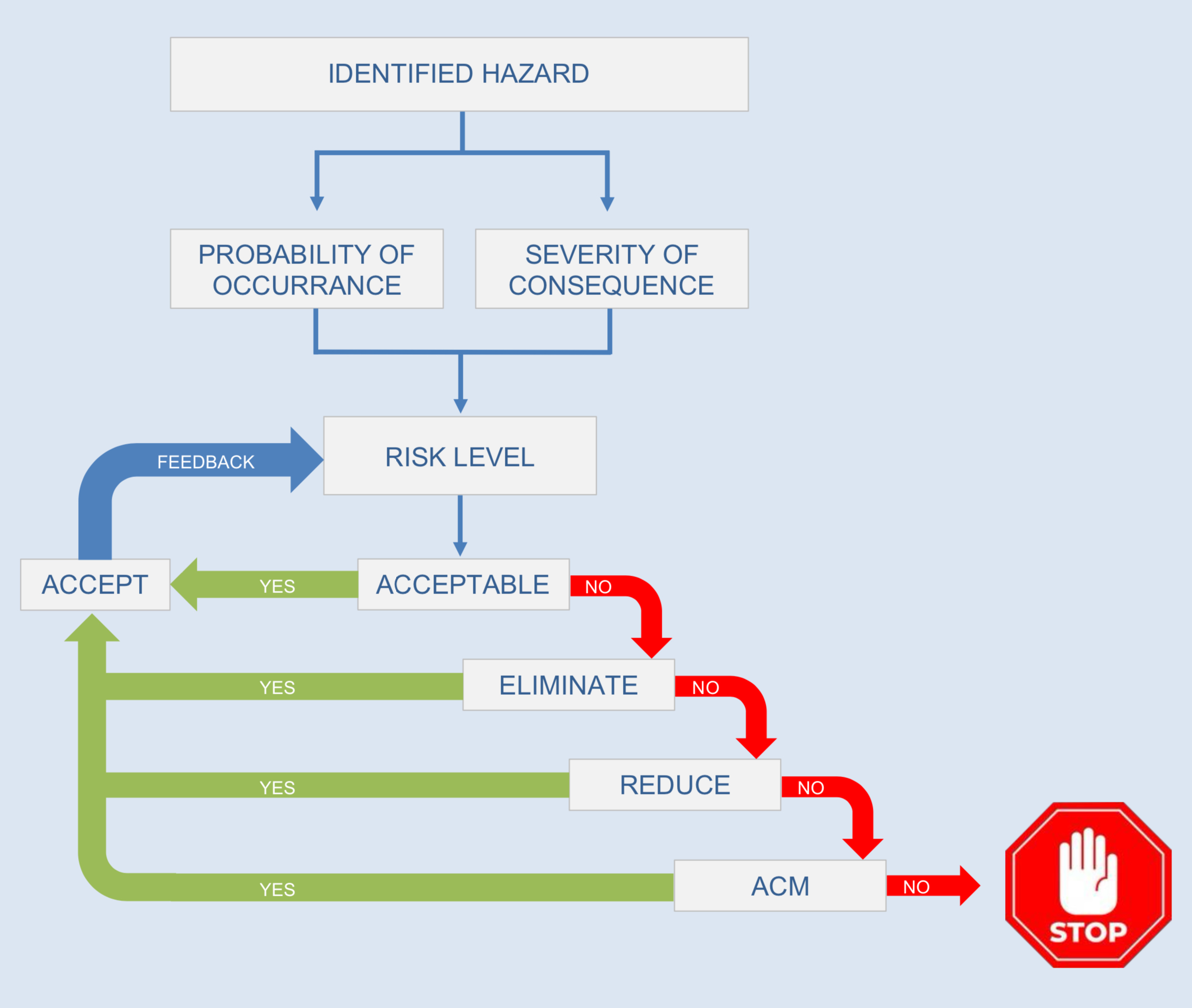Title Page
-
Hazard or Risk Titel
-
Hazard & Risk Number
-
Performed by
-
Issued on
-
Location
Aircraft Registration (if applicable)
-
Signed by Reporter
Information Provider
-
Name
-
Surname
-
Titel / Occupation
-
Address
-
e-Mail
-
Phone
-
Date
-
Signature
Abstract & Scope
-
Abstract: Brief summary of the content and to what reference this SwissPSA Hazard & Risk Identification and Analysis was written.
Scope: What does this document address. -
Abstract
-
Scope
Hazard / Risk Reference
-
Area: (Specify the system to be considered. Does the hazard apply to a subset or the whole System?)
-
Hazard / Risk Description: (Describe the Scenario)
-
Hazard / Risk Category: (Select categories)
-
Specify "Other" Category of Hazard and / or Risk
-
Hazard or Risk Consequence: (Include any existing mitigations or assumptions which limit the consequences. Refer also to OMM ATT10)
Root Cause Analysis (RCA)
-
Step-by-Step Instructions :
First state the problem you have identified as a strategic problem to work on.
Second start asking “why” related to the problem. Like an inquisitive toddler, keep asking why in response to each suggested cause.
Third ask as many whys as you need to get insight at a level that can be addressed (asking five times is typical). You will know you have reached your final „why“ because it does not make logical sense to ask why again.
It is said that only by asking "Why?" five times successively, can you delve into a problem deeply enough to understand the ultimate root cause. By the time you get to the 4th or 5th why, you will likely be looking squarely at management practices. However, more than five whys may be required for complex
problems. -
What is the Issue / Problem?
-
Identification of the Root Cause
-
1. Why?
-
2. Why?
-
3. Why?
-
4. Why?
-
5. Why?
-
State Root Cause
Hazard- / Risk Assessment
-
The probability of an individual hazard or risk will be determined by considering any mitigation measures that may already be in place. Determination of probability is not an exact science but relies on a logical, commonsense analysis of the hazard or risk, to arrive at a reasonable answer.
Hazard or risk probability is to be defined in accordance with the following table: -
Hazard / Risk Frequency (How often an event may occure)
-
The severity of hazards or risks will be determined by considering any mitigation measures that may already be in place. Severity should be assessed in terms of the worst possible realistic scenario.
Hazard or risk severity should be defined in accordance with the following table: -
Event Severity (The severity of the potential scenario arising from a hazard or risk)
-
When severity and probability have been defined, the tolerability of the risk can be determined.
The tolerability of an individual hazard or risk is determined by use of the following risk tolerability matrix using the formula Probability x Severity: -
Hazard / Risk Tolerability Matrix
-
When the hazard or risk value has been calculated, the hazard or risk classification can be determined.
Tolerability classification is defined as either acceptable, to be reviewed (tolerable) or unacceptable, allowing a suitable risk mitigation strategy to be developed if required.
Definitions of tolerability levels are as follows: -
Risk Classification: (Qualitative judgement)
Risk Reduction Strategy
-
SwissPSA uses the following Cascading-Model for mitigation development to maintain and monitor risks.
The Risk Reduction Strategy is based on the concept of:
ACCEPTABLE – ELIMINATE – REDUCE – DECLINE
This cascading-model should be followed when defining mitigation actions.
Pre-Mitigation Actions
-
Preliminary Actions taken?
-
Why have no preliminary actions been taken?
-
Until when are preliminary actions defined?
-
What are the preliminary actions?
-
Why are preliminary Actions not required?
Mitigation Actions
-
Depending on the hazard or risk, defences to mitigate the hazard or risk must be defined until the hazard or risk is considered acceptable and thereafter be controlled for their effectiveness.
Include any safety analyses required
When defining mitigation actions consider following questions to assess effectiveness of the same:
1. Does it address the hazard / risk?
2. Is it effective?
3. Is it appropriate?
4. Is additional or different mitigation warranted?
5. Do the mitigation strategies generate additional hazards or risks? -
Have Mitigation Actions been defined?
-
Why have no actions been defined yet?
-
Until when is an action defined?
-
What are the defined actions?
-
Why are no actions required?
Re-Assessment of Hazard or Risk after Mitigation Actions
-
The probability of an individual hazard or risk will be determined by considering any mitigation measures that may already be in place. Determination of probability is not an exact science but relies on a logical, commonsense analysis of the hazard or risk, to arrive at a reasonable answer.
Hazard or risk probability is to be defined in accordance with the following table: -
Hazard / Risk Frequency (How often an event may occure)
-
The severity of hazards or risks will be determined by considering any mitigation measures that may already be in place. Severity should be assessed in terms of the worst possible realistic scenario.
Hazard or risk severity should be defined in accordance with the following table: -
Event Severity (The severity of the potential scenario arising from a hazard or risk)
-
When severity and probability have been defined, the tolerability of the risk can be determined.
The tolerability of an individual hazard or risk is determined by use of the following risk tolerability matrix using the formula Probability x Severity: -
Hazard / Risk Tolerability Matrix
-
When the hazard or risk value has been calculated, the hazard or risk classification can be determined.
Tolerability classification is defined as either acceptable, to be reviewed (tolerable) or unacceptable, allowing a suitable risk mitigation strategy to be developed if required.
Definitions of tolerability levels are as follows: -
Risk Classification: (Qualitative judgement)
Responsible Manager, Admin & Controlling
-
Responsible Person(s) (Responsible for Oversight of Mitigation Actions)
-
Have the actions defined incl. Due Date been assigned to a responsible person?
-
Why have the actions defined not been assigned?
-
State Action Reference (AC-??) and person to whom the task has been assigned
-
Why is it not applicable?
-
Has the Risk Assessment Checklist been updated?
-
Why has the Risk Assessment Checklist not or not yet been updated?
-
Why is it not applicable?
-
Has an internal follow up Audit / Inspection been planned?
-
Why is it not necessary to conduct a follow up Audit or Inspection?
-
When is the follow up Audit / Inspection planned?
-
Why is it not applicable?
Summary of Hazard / Risk Identification Assessment
-
Summary
Approval
-
Date and time of approval
-
Approver's signature






